As planting season approaches, growers are concerned about a variety of pests, including the black vine weevil. Do you want to know if this species is indeed harmful? You're in luck since we did some research on this topic to assist you. Here's what we learned.
Both adult and larvae black vine weevils are equally harmful to susceptible plants. The larvae devour the roots of the plants, which might harm the root system and cause the plant to wilt and die. While the adult consumes plant leaves that may damage it aesthetically.
This article will go into great detail regarding the black vine weevil issue in your garden. We'll also explain to you how it looks precisely, how to get rid of it, and some common plants that it commonly attacks. Continue reading for more information.
What Does A Black Vine Weevil Look Like?
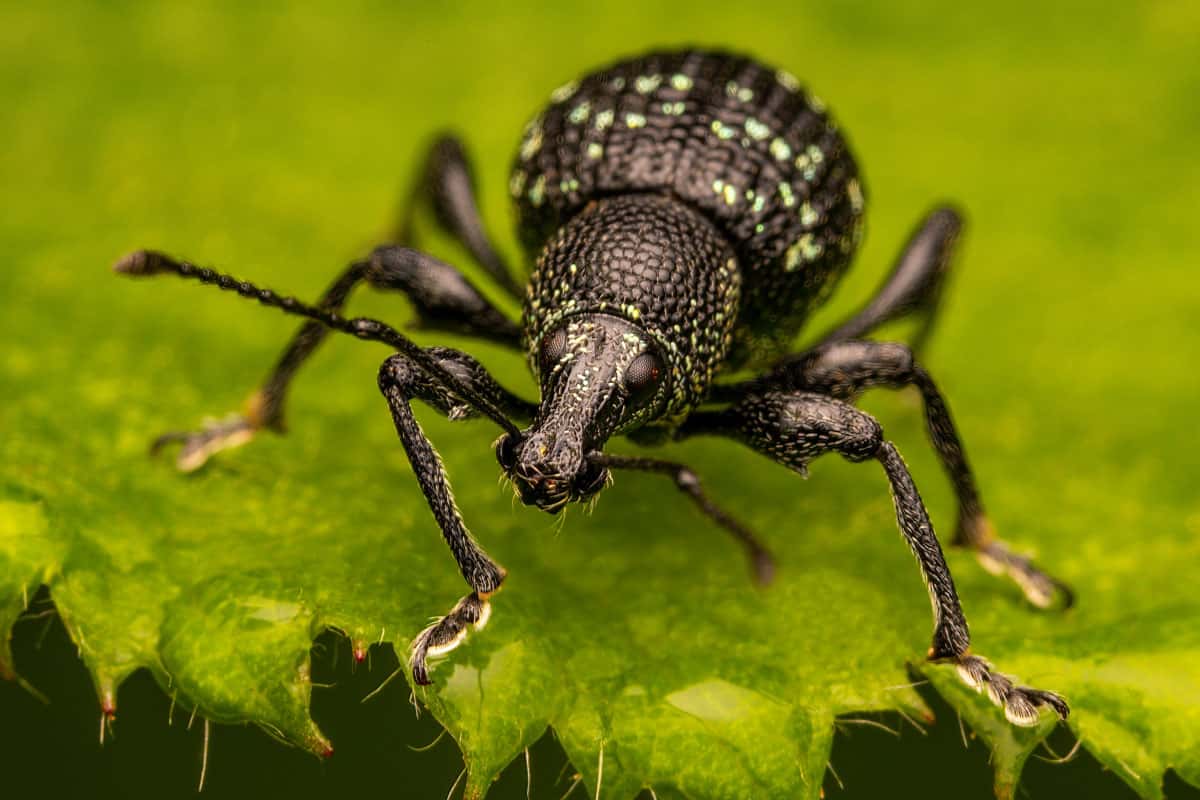
There are different types of weevils and one of them is the oval oblong shape, the black vine weevil (Otiorhynchus sulcatus). Although native to Europe, it is commonly found in North America.
The appearance of adults is oval, slate-gray to black which is around ¾” long but cannot fly. They also have elbowed antennae, small fur or hair patches on their wings, and short, broad snouts.
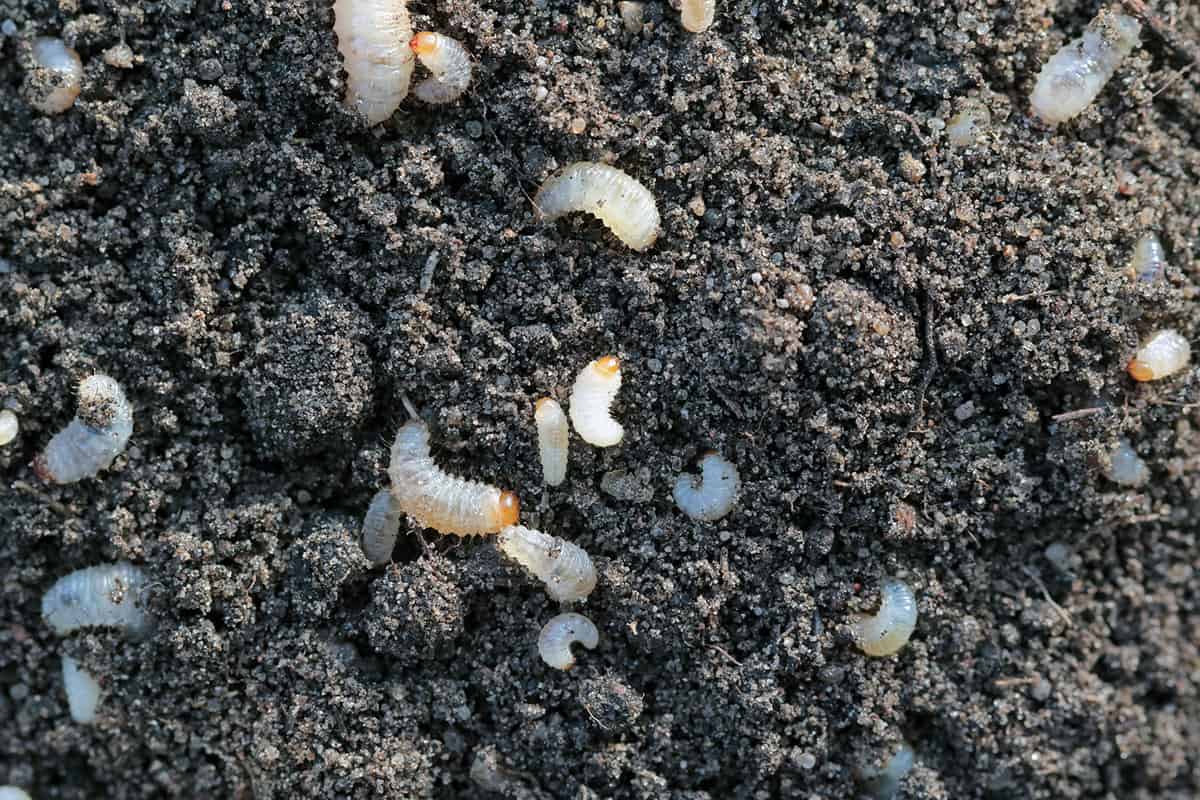
The larvae of these black vine weevils are tiny (about ½” long), white, and C-shaped grubs that eat by burrowing into roots.
In the soil near the roots of their host plants, black vine weevils spend the winter as almost grown larvae. They transform into pupae in the spring and start to emerge as adults.
Depending on the weather, they start laying eggs (around 500 eggs) close to the host plants' crowns in two or more weeks. As the eggs hatch, the small larvae bury themselves in the ground to start feeding.
Are Black Vine Weevil Harmful?
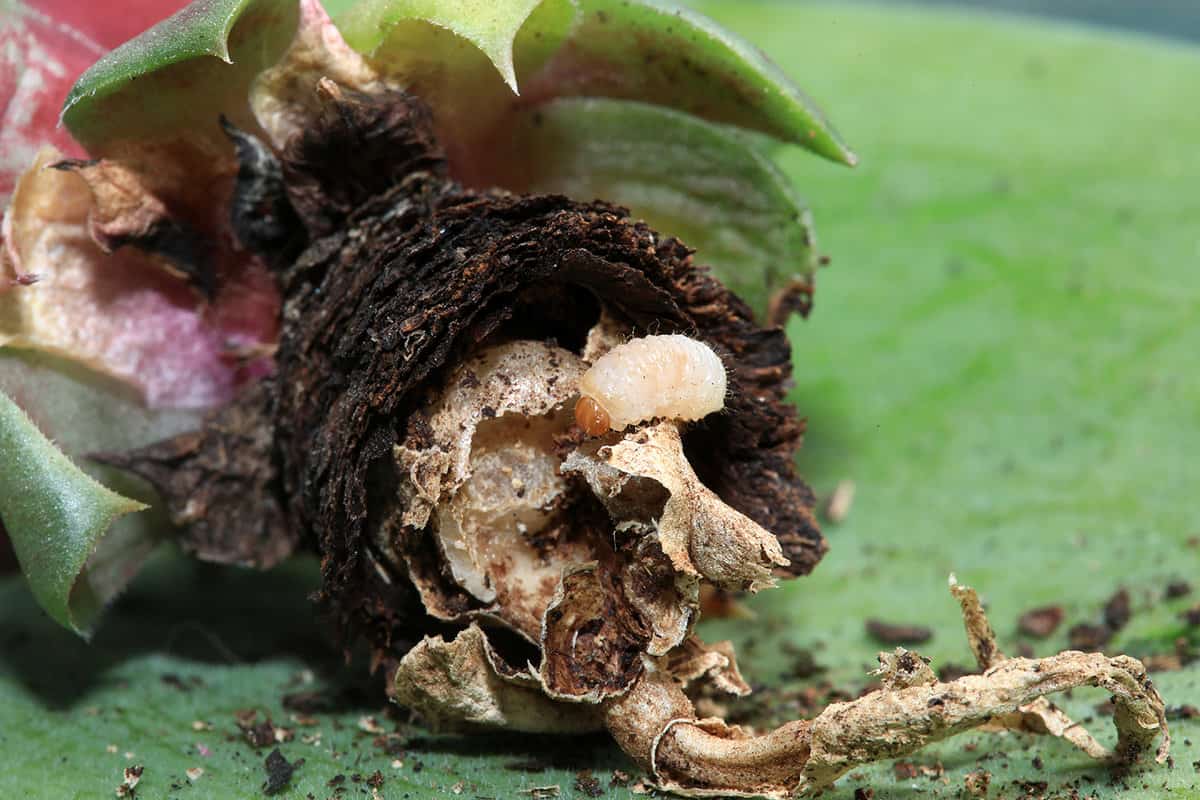
Black vine weevils are not harmful to people. They have no negative consequences if you accidentally consume them with your food. However, you definitely don't want this creature in your garden, as it can cause irreparable damage.
The larvae of grubs are the most destructive because they eat through plant roots, leaving empty spaces that prevent the plants from getting the water and nutrients they need to survive, which causes the plants to wither and die.
The adult hides beneath the dirt, in crevices, and under fallen leaves. In order to find refuge and protection during the winter, the grubs or adult black vine weevils are hidden inside the soils, debris, or within cracks and other locations.
The adult population increases after rain or a rainy summer, and it is common to see it in and around the house as it is drawn to lights. Although they're harmless indoors, they destroy your garden.
10 days after the eggs are placed, they hatch into grubs near the base of the plants where they were laid. The grub begins eating the plant roots as soon as the eggs hatch and is capable of completely destroying a plant.
The purchase of infected plants is the most frequent cause of this pest infestation. Check to see if a plant is infected before buying it. The most typical indicator of it would be to see the leaves.
A maximum possibility exists that an adult has placed eggs in the plant's root ball if there is evidence of the adult feasting on the leaves. Pesticides can't get to the larvae since they typically emerge from the root ball at a great depth.
How Do You Get Rid Of Black Vine Weevils?
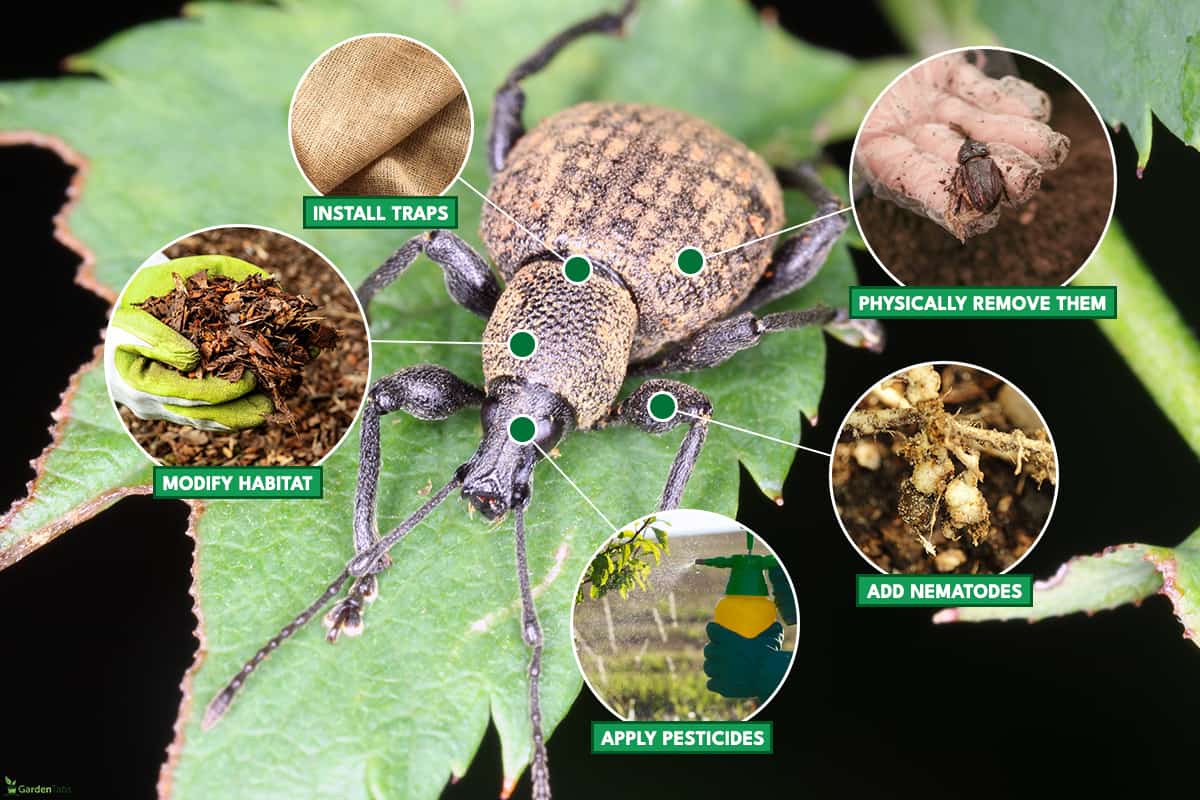
The best way to manage black vine weevil infestations is to be aware of what leads to them and implement appropriate preventative measures. If it's too late for that, there are a few more methods for getting rid of the pests.
Physically Remove Them
Being nocturnal, adult black vine weevils can only be found at night, making it difficult to spot an infestation by looking for the pests directly.
However, it is a choice if you don't mind using a flashlight on a few nights in May and June to look at the leaves of recognized host plants. Pick any weevils you find off the foliage and kill them.
Click here to see this flashlight on Amazon.
Apply Pesticides

A systemic pesticide is your best option if you don't mind putting them in your garden. Imidacloprid is a pesticide that kills adult black vine weevils as well as their larvae. It is applied with water at ground level, soaking the soil around the plant.
Click here to see this imidacloprid on Amazon.
In a bucket with water, combine the imidacloprid according to the directions on the label. The amount of imidacloprid to use depends on the height of the plant.
Click here to see this bucket on Amazon.
Other pesticides you may use are acephate, cyfluthrin, permethrin, etc. They are for adults, and you need to employ any of these chemicals three weeks after the adults are first noticed and then one more four weeks later. Due to the adults' nocturnal habits, apply the chemicals later in the day.
Click here to see this acephate on Amazon.
Click here to see this cyfluthrin on Amazon.
You may also apply diatomaceous earth (DE) around the susceptible host, which is 100% organic (doesn’t contain toxic poisons) for long-lasting insect prevention. The DE kills by slashing an insect's outer coat when it crawls over the fine powder, which is made out of tiny fossilized aquatic creatures.
Click here to see this diatomaceous earth on Amazon.
Most pesticides are toxic. Read the label's instructions and safety warnings, then follow them carefully. Store in original, labeled containers away from the reach of kids, pets, and livestock. Once empty, safely dispose of containers right away.
Install Traps
There are several traps that work well to get rid of adult black vine weevils. Some of them are homemade or do-it-yourself (DIY) projects, while others are bought from home improvement retailers.
For homemade traps, you may use the old piece of burlap you have in your yard and wrap it around the trunks of pest-targeted evergreen trees like hemlock trees towards the end of the day, in preparation for nighttime feeding.
Click here to see this burlap on Amazon.
Such materials are frequently used by insects as a refuge. Check the burlap in the morning for pests and eliminate any black vine weevils you find.
Another DIY trap uses any old piece of cloth wet with just enough water. Put this wet cloth in your home's gloomy areas. It will draw weevils, eventually trapping them. Wash the weevils off the cloth with water once you've found enough of them. Repeat as much as you can.
Tanglefoot is an example of a trap you can purchase at a store. Apply it to the banding material using a putty knife. The way this product operates is similar to how flypaper is applied indoors.
Click here to see this tanglefoot on Amazon.
Click here to see this putty knife on Amazon.
Add Nematodes
Along with handpicking and traps, using predators is another organic strategy to prevent a significant infestation. Before any additional plant damage occurs, the predators can eliminate the larvae if added timely.
In this case, parasitic nematodes (Heterorhabditis bacteriophora) are the predators. You can purchase them from any biological control company online. Nematodes can help you combat these black vine weevils.
Click here to see these nematodes on Amazon.
This technique gets to the bottom of the problem just like a systemic pesticide does because the nematodes are directly introduced into the soil directly beneath the host plants. To adequately acquire them, ensure that your soil is suitably well-drained.
Mid-summer is the optimal time to apply this technique because it is when black vine weevil larvae are first anticipated to appear. Either in the morning or the evening, apply the drench.
Prior to application, irrigate the area to evenly moisten the ground. After application, keep it uniformly moist too for two weeks.
Modify Habitat
In July and August, soil moisture levels between moderate and high are favorable for egg and larval survival. Heavy mulches also aid in preserving vital moisture levels. Don't water plants unless absolutely required, and remove extra mulch layers.
A plant's base can girdle when the soil is very wet in the fall, which forces larvae to move up the plant. Keep rain downspouts in good condition and make sure the soil surrounding plants have enough room to drain.
What Are The Plants That Black Vine Weevils Typically Attack?
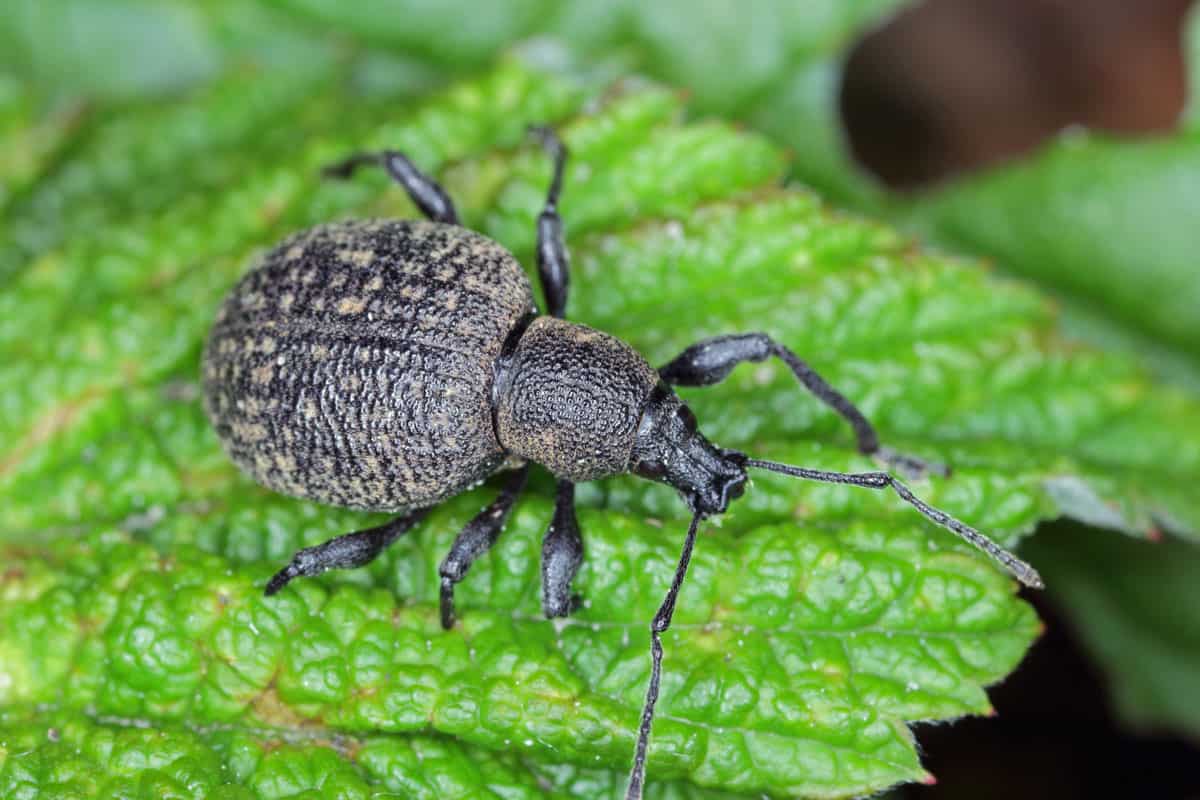
Both adults and larvae black vine weevils consume attractive plants for food. Over 100 types of woody and herbaceous plants have been identified as food sources for adult black vine weevils. However, yew (Taxus), hemlock (Tsuga), and other rhododendrons are the favored hosts.
Black vine weevil is also known as the "taxus weevil" since yew seems to be the most vulnerable host. Perennials grown in containers are frequently infested by the black vine weevil in nurseries, greenhouses, and polyhouses.
Compared to young plants, established plants are more resistant to black vine weevil larvae damage because established plants have more biomass in their root systems, which enables them to sustain the pest's feeding without experiencing negative growth consequences.
Conclusion
In order to ensure a healthy garden, make sure it is clear of pests like the black vine weevil, which would otherwise ruin your garden. Keep an eye on your garden and, if you notice any signs of infestation, take action as soon as possible.
Have a look at the additional information on typical pests or insects that you might find in your garden below.










